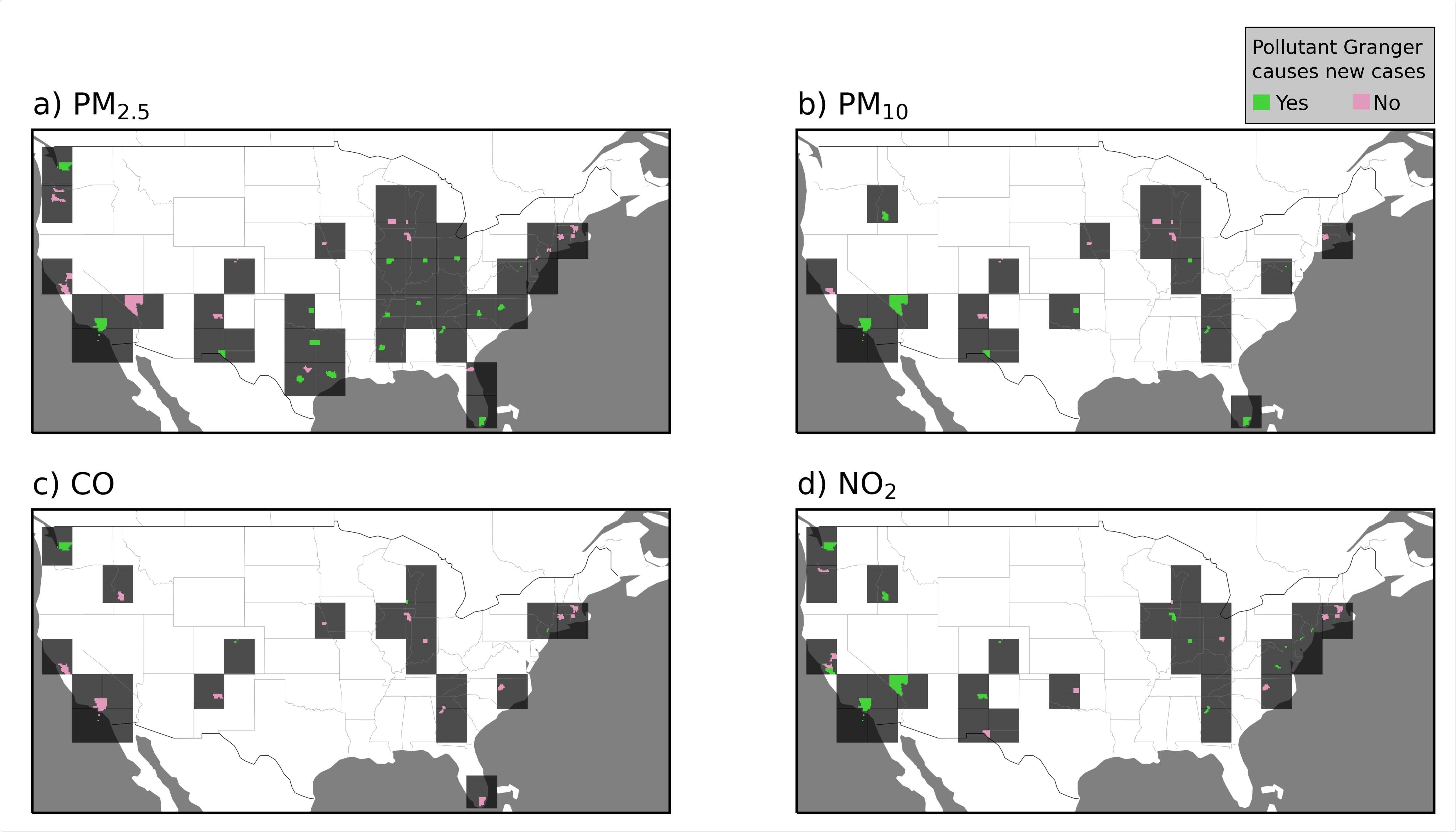Exposure to particulate matter — a mixture of liquid and solid particles suspended in the air that ranges from dust to airborne transmission of viral droplets — has been harmful to human health. Research led by Maria de Fatima Andrade from the University of São Paulo in Brazil found particulate matter plays a significant role in increasing coronavirus cases in cities.
The authors write:
"The findings support the viral transport hypothesis, i.e., virus can associate with the preexistent particulate matter in the air synergically. We conclude that PM2.5 plays a small, yet discernible, role in the COVID-19 transmission."
The study "Exploring the short-term role of particulate matter in the COVID-19 outbreak in USA cities" is available as a preprint on the medRxiv* server, while the article undergoes peer review.

Analyzing COVID-19 case data and pollution levels
The researchers looked at the short-term relationships between particulate matter and how it contributed to COVID-19 cases in U.S. cities during the early stages of the pandemic.
They collected pollutant information from December 30, 2019, to July 31, 2020, using several datasets, including the World Air Quality Index project and the 2019 Novel Coronavirus COVID-19 (2019-nCoV) Data Repository from John Hopkins University. They matched the city-level pollution data from both datasets to county COVID-19 data. The team then narrowed their data analysis to cities with at least 80% of data available after their first case, had at least 70% of data involving particulate matter less than 1 µg to PM and nitrogen dioxide and 1 ppm to carbon monoxide.
The researchers analyzed particulate matter concentrations less than 2.5 µm and between 10 and 2.5 µm ((PM2.5 and PM10 , respectively).
A Granger causality analysis was used to find potential relationships between pollution levels instantaneous and the rate of daily COVID-19 cases in cities. They also used a logistic fitting curve to measure the number of accumulated COVID-19 cases. Lagged correlations were used to find an association between the accumulated cases and pollution's effect in influencing the spread of severe acute respiratory syndrome (SARS-CoV-2).

What they found
Results showed that having a PM2.5 concentration was associated with COVID-19 cases in 17 of 44 cities. PM2.5 was significantly higher from 0 to 18 days. Higher lags matched the incubation time for SARS-CoV-2, suggesting a PM2.5 concentration significantly impacted outbreak development.
The researchers conclude that PM2.5 greatly contributes to the coronavirus outbreak. They found that this particulate matter concentration increased the rate of COVID-19 cases in cities by 67%. This correlation was not observed with PM10.
Based on the results, the researchers suggest several explanations:
"We can describe at least three potential mechanisms underpinning these relationships: (1) long-term PM2.5 exposure increases population susceptibility; (2) PM2.5 indicates social mobility and (3) PM2.5 is a viral airborne transport facilitator. Mechanisms 1 and 2 are confounding factors to Mechanism 3."
Other pollutants, such as PM10 and nitrogen dioxide, were also linked to new COVID-19 cases, but in fewer cities. Nitrogen dioxide was linked to the rate of COVID-19 cases in 7 out of 28 cities and PM10 in 8 out of 20 cities.
Carbon monoxide was significantly linked to the rate of COVID-19 cases in 4 out of 21 locations. Carbon monoxide was also correlated with accumulated case rates with notably higher correlations after 26 days.
There was no pattern found in how the new COVID-19 cases spread throughout cities, indicating possible confounding effects such as weather and other unique regional features.
Future Work
Given the United State's diverse geographic landscape and differences in state measures during the pandemic, the researchers suggest the findings could be generalizable to other countries. They say that with more COVID-19 data, future studies would focus on the relationship between pollution levels and COVD-19 cases in cities worldwide.
"Broadly, we hope to raise the interest of the scientific community as well as the awareness of the general public and decision-makers to the potential synergy between viral transmission and air pollution," wrote the research team.
In terms of actionable items, the team says any attempt to lower the spread of COVID-19 cases in cities would help end the pandemic.
*Important Notice
bioRxiv publishes preliminary scientific reports that are not peer-reviewed and, therefore, should not be regarded as conclusive, guide clinical practice/health-related behavior, or treated as established information.
- Kamigauti LY, et al. Exploring the short-term role of particulate matter in the COVID-19 outbreak in USA cities. medRxiv, 2021. doi: https://doi.org/10.1101/2021.03.09.21253212, https://www.medrxiv.org/content/10.1101/2021.03.09.21253212v1
Posted in: Child Health News | Men's Health News | Medical Research News | Women's Health News | Disease/Infection News
Tags: Air Pollution, Carbon Monoxide, Coronavirus, Coronavirus Disease COVID-19, Pandemic, Pollution, Research, Respiratory, SARS, SARS-CoV-2, Severe Acute Respiratory, Severe Acute Respiratory Syndrome, Syndrome, Virus

Written by
Jocelyn Solis-Moreira
Jocelyn Solis-Moreira graduated with a Bachelor's in Integrative Neuroscience, where she then pursued graduate research looking at the long-term effects of adolescent binge drinking on the brain's neurochemistry in adulthood.
Source: Read Full Article